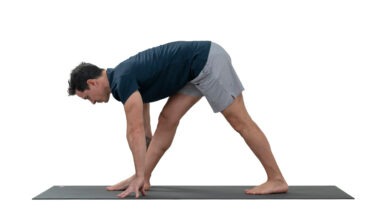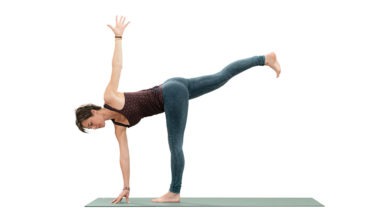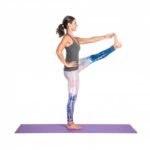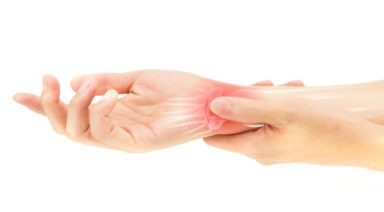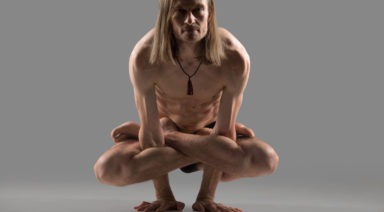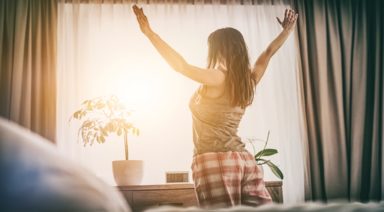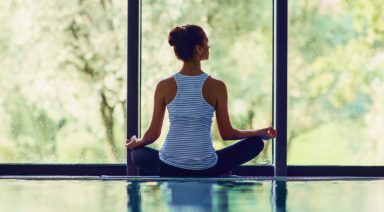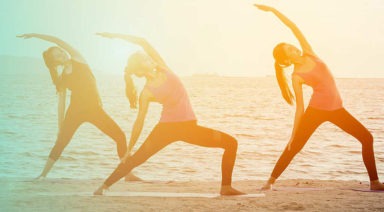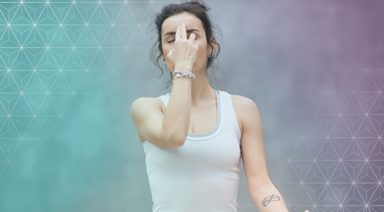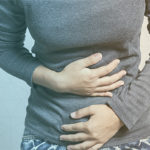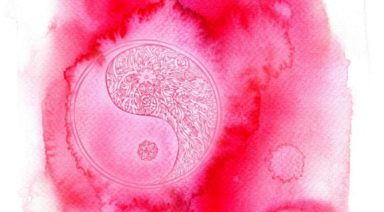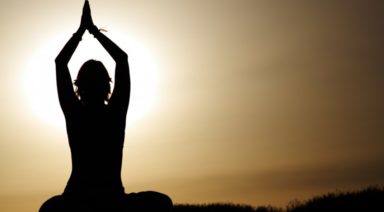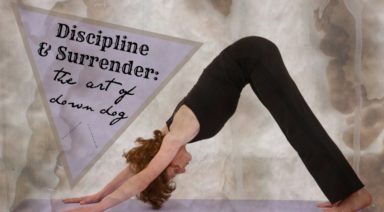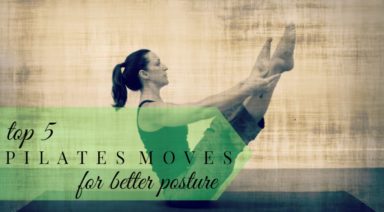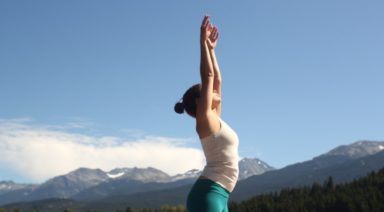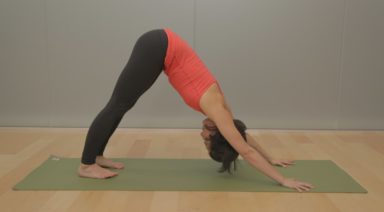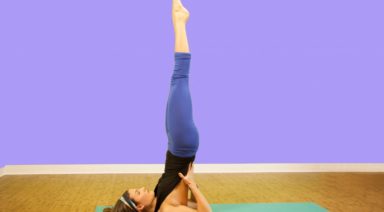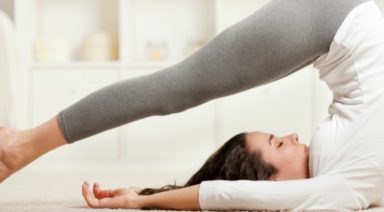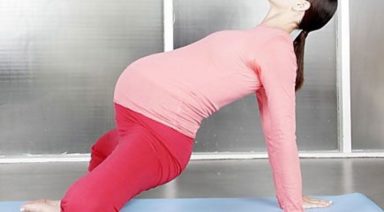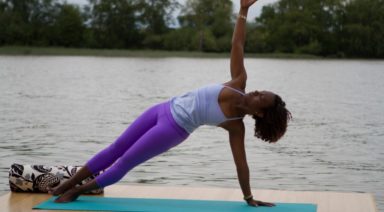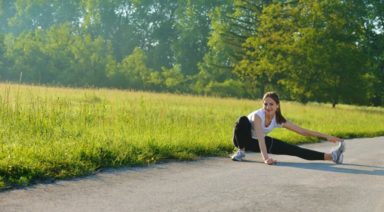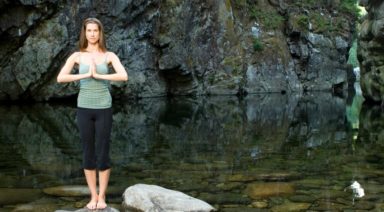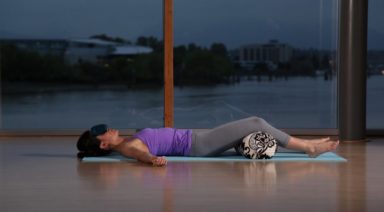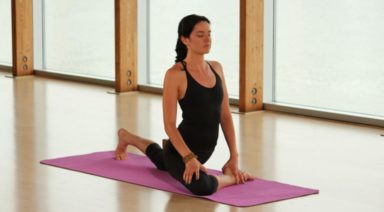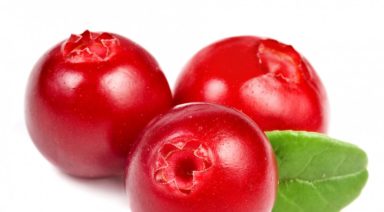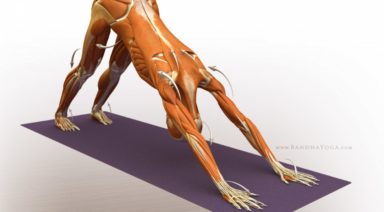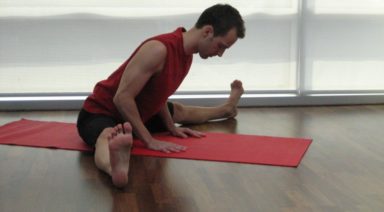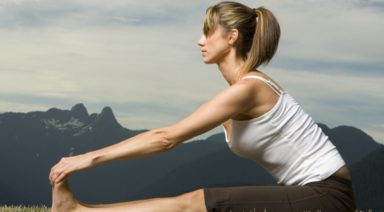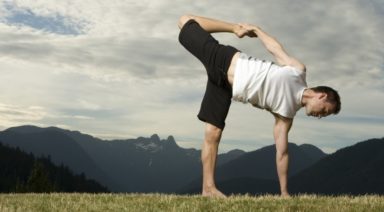Eka Pada Urdhva Dhanurasana: One-Legged Bow Pose
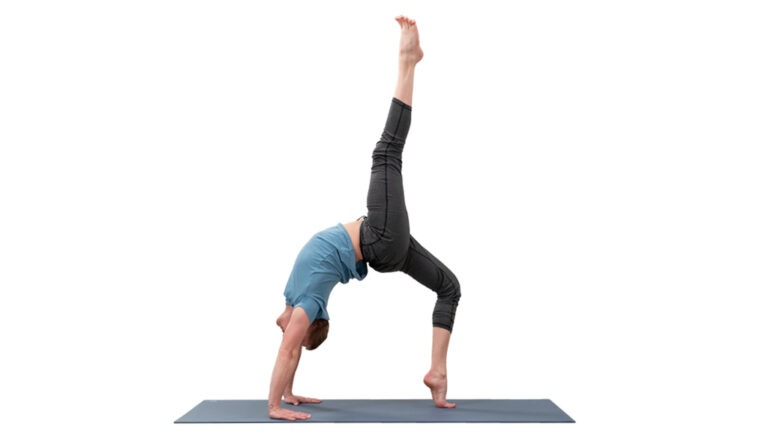
ADJUSTMENTS | BENEFITS | SEQUENCING | SANSKRIT | STEPS
Eka pada urdhva dhanurasana (EH-kah PAH-dah OORD-vah don-your-AHS-anna) is the one-legged variation of upward-facing bow pose.
Philosophy + Origin
The power of the bow pose is present in this one-legged variation. In a world that glorifies multi-tasking, use eka pada urdhva dhanurasana as a reminder to go one step, or one foot, at a time. Think about the coordination required in your body and mind to make this pose happen. Can you use the same coordination to steadily go from one task to the next with grace and poise?

ADJUSTMENTS/MODIFICATIONS:
- Start with taking one knee toward the chest before extending the leg up.
STEP-BY-STEP:
- Begin lying on your back with knees bent, set up for bridge pose.
- Place your hands on either side of your head, fingers facing your shoulders and elbows pointed upward.
- Lift your hips (bridge pose), then press to the crown of your head. If you feel stable here, press into your hands to lift into upward-facing bow pose.
- Shift your weight into your left foot and draw your right knee up, then extend your toes up to the ceiling.
- Hold for 2-3 breaths, then release back to upward-facing bow. Repeat on the other side.
- Tuck your chin and slowly release all the way down to the mat.

PREPARATORY POSES:
- Upward-facing bow pose | Urdhva dhanurasana
- Bridge pose | Setu bandhasana
- Upward-facing dog | Urdhva mukha svanasana
SEQUENTIAL POSES:
- Dancer pose | Natarajasana
- Half splits | Ardha hanumanasana
COUNTER POSES:
- Seated forward fold | Paschimottanasana
- Childs pose | Balasana
SANSKRIT:
- Eka = one
- Pada = foot
- Urdhva = upward
- Dhanu = bow
- Asana = pose
PHYSICAL BENEFITS:
- Strengthens legs and back.
- Stretches pelvis and quadriceps.
- Improves balance and coordination.
ENERGETIC BENEFITS:
- Boosts energy.
- Promotes confidence.
- Improves mental focus.
Legal Disclaimer Before participating in any exercise program or using any fitness products or services that may be described and/or made accessible in or through the Gaia Website and/or the Services, you should consult with a physician or other healthcare provider. Read more about Gaia’s Terms Of Use.
Hanumanasana: Front Splits Pose
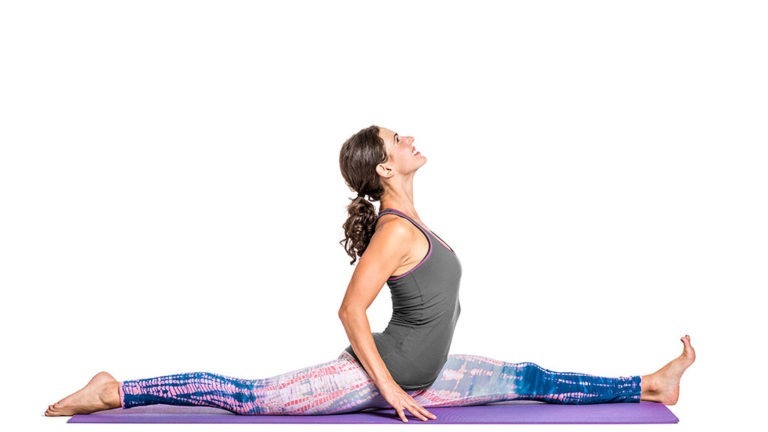
ADJUSTMENTS | BENEFITS | SEQUENCING | SANSKRIT | STEPS
Hanumanasana (hah-new-mahn-AHS-ah-nah) honors the great leap made by Hanuman, the famous monkey god from the Ramayana, across the ocean from India to the mountains of Sri Lanka. Front splits pose demands flexibility, strength, and stability.
Philosophy + Origin
More than just an incredible leap, Hanuman is remembered, celebrated, and worshiped because of his great devotion and courage. To be devoted, one must be bold enough to stand firmly in their beliefs, selflessly serving others and putting others’ needs above their own.
Because of its physical demands, it’s easy to get caught up in “achieving” the outward appearance of the posture. As such, it’s important to keep your ego in check as you dedicate yourself to the posture. Above all, invite kindness and selflessness to flow freely from the posture. As you practice, ask yourself how you can embody Hanuman’s devotion both in your physical yoga practice and your everyday life.




